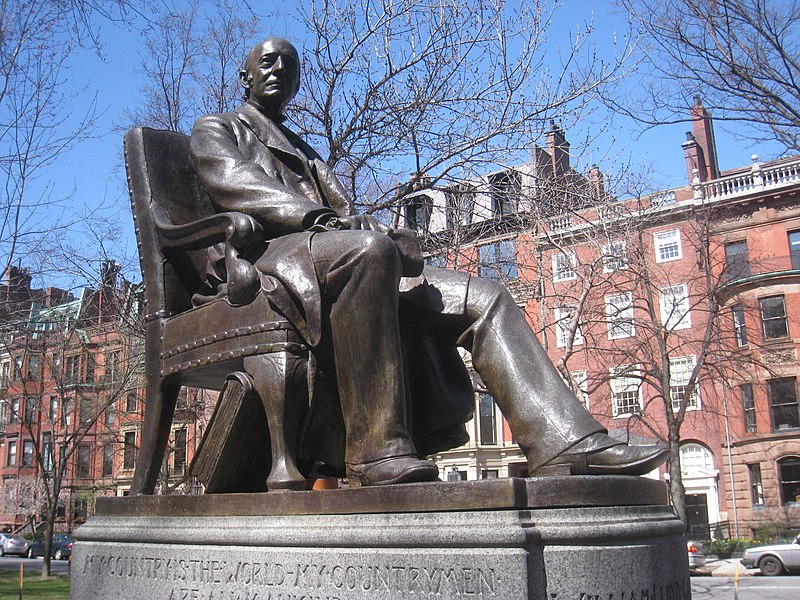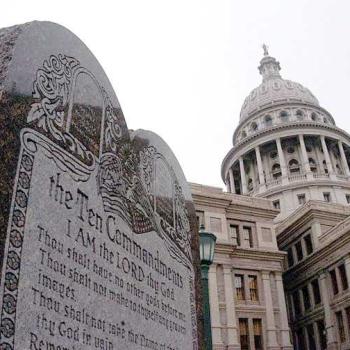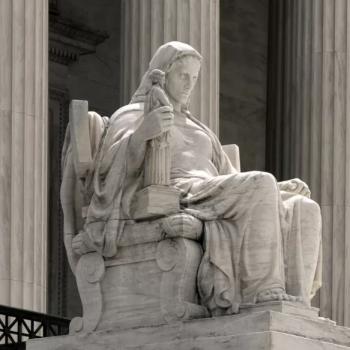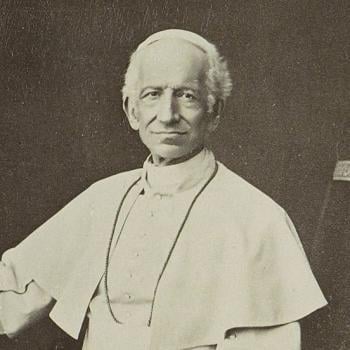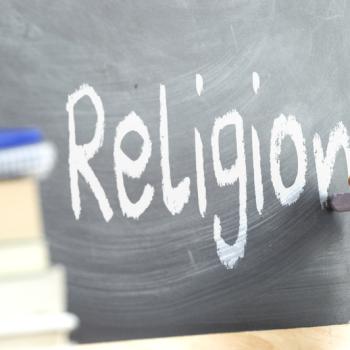Misunderstanding abounds about the role of Christianity and the abolitionist movement, the 19th century movement to abolish slavery, in the U.S. People who don’t care for religion do love to mention that many Christian ministers of the U.S. antebellum South supported slavery. And that is true. However, they don’t seem to know that more U.S. Christian ministers opposed slavery. Indeed, northern evangelical and other Christian clergy were organizers and leaders of the abolitionist movement.
The organized abolitionist movement in the U.S. began around 1830, but abolitionism existed in the New World long before that. The earliest documented protest against African slavery in North America was made in 1688 by a group of Quakers in Germantown, Pennsylvania, which is now part of Philadelphia. The authors of the Germantown Quaker Petition Against Slavery were recent immigrants from Germany who struggled with English, but their meaning is clear enough:
There is a saying that we shall doe to all men like as we will be done ourselves; making no difference of what generation, descent or colour they are. And those who steal or robb men, and those who buy or purchase them, are they not all alike? Here is liberty of conscience wch is right and reasonable; here ought to be liberty of ye body, except of evil-doers, wch is an other case. But to bring men hither, or to rob and sell them against their will, we stand against.
A Slow Awakening
Chattel slavery was legal, and practiced, in all the British colonies in North America before the American Revolution of 1776. The Germantown petitioners of 1688 criticized other Quakers who kept slaves. Most Quakers of the early colonial period were reluctant to take a stand on what was a very controversial issue. Anti-slavery sentiment grew among the Quakers, however, and through their influence the new U.S. state of Pennsylvania became the first state to abolish slavery, in 1780.
Quaker anti-slavery activists began reaching out to the general population. Among these was Anthony Benezet (1713 – 1784). Benezet was a Quaker schoolteacher who, beginning in 1750, offered evening classes to Black Pennsylvanians. His anti-slavery tracts circulated throughout the U.S. and in Europe. It’s said that few people who read them were unmoved.
As abolitionism spread beyond the Quakers it remained essentially a religious movement. In the latter part of the 18th century the tract-writers who opposed slavery couched their arguments in biblical terms. Many quoted Exodus 12:16 — “And he that stealeth a man, and selleth him, or if he be found in his hand, he shall surely be put to death” (King James Version). Both Black and White abolitionists also cited the Exodus story to warn New World slave owners that the calamities God once sent to Egypt could happen to them — “Let my people go!”
The South: A “Way of Life”
By 1817 most northern states had either abolished slavery or had committed themselves to be done with it by some future date. But the southern states became more committed to slavery as northern states became less so. And the difference had to do with money. Cotton had become the most lucrative cash crop in the South. Indeed, for a time cotton by itself was more than half of all U.S. exports. Large-scale cotton growing required a lot of workers in the fields, and the wealthy and powerful owners of cotton plantations were certain their “way of life” depended on the institution of slavery.
In the early 19th century, while the north became more industrialized, the South remained agricultural and quasi-feudal. The wealth of the South was concentrated in the hands of the plantation owners, who also dominated state governments. Most southern Whites were poor and uneducated subsistence farmers — in effect, peasants — who received no economic benefits from the slave economy. Even so, as Whites they received enough social benefits and privileges in southern society that most supported slavery.
What about southern Christian ministers? Well, as Upton Sinclair famously said, “It is difficult to get a man to understand something, when his salary depends on his not understanding it.” Ministers of White churches depended on the approval of the plantation owning class for their positions. There was no way a White southern minister could preach abolition and keep his job. Ambitious clergy managed to find plenty of excuses for slavery in the Bible. Further, many plantation owners liked to pretend they were just like White missionaries in Africa, bringing Christianity to Black heathen people (but doing it from the comfort of home, while getting their cotton picked).
When speaking of Christianity in the antebellum South we must not forget the rich history of Black churches, of course, which tended to harbor a different perspective on slavery from White churches.
The North: Abolitionism and the Second Great Awakening
In the 19th century, before the Civil War, there was a range of opinions on slavery in the northern states. Most northerners did not have a compelling interest in forcing an end to slavery in the South, but they didn’t want it in their neighborhoods. They also didn’t want slavery to be allowed into the western territories. Many expected that someday they, or their children, would go West to own their own commercial farms or start their own businesses. They could see from the example of the South that widespread slavery killed entrepreneurship, since those with money just had enslaved people make their clothes and shoes and saddles and whatever else they needed.
True abolitionists, those who called for an end to slavery everywhere, were a minority in the North. But they tended to be a very religious minority. The abolitionist movement gained momentum and organizational power from the Second Great Awakening, a period of Protestant revivalism that spread to the U.S. from Europe in the 1790s. The Awakening presented a form of Christianity that was optimistic and egalitarian, considerably different from the Calvinism that had prevailed in the U.S. before. The revivalists promoted the idea that all people are moral free agents who could accept or reject sin. Our fates are not preordained; all people who walk in the light of Jesus will be saved.
The Second Great Awakening established evangelical Christianity in America. But this was an evangelicalism different from much of today’s; please see When Evangelicals Were Liberal. The Second Great Awakening encouraged salvation through good works and gave rise to a host of social reform movements. The Temperance Movement, for example, was a product of the Awakening. And the Awakening made abolitionism a force to be reckoned with in the northern states.
Slavery as Sin
A theme repeated throughout abolitionist literature was that slavery is a sin. Many of the leaders of the abolitionist movement were ministers. Here are just two examples. The Rev. Charles Finney (1792–1875), a Presbyterian, denounced slavery from the pulpit and denied communion to slaveholders in his churches. An African-American Presbyterian minister named Theodore S. Wright (1797–1847), the first Black graduate of Princeton Theological Seminary, mailed bundles of abolitionist tracts and newspapers to church and political leaders throughout the country. Wright was one of the founders of the prominent American Anti-Slavery Society.
Abolitionists who were not ordained still tended to express their beliefs in Christian terms. For example, Angelina Grimké (1805–1879) was the daughter of a wealthy slave-owning family in Charleston, South Carolina. Her deep religious convictions told her that slavery was a sin, and she moved to Philadelphia to join the abolitionists. Her background made her an important voice in the movement. Harriet Beecher Stowe (1811–1896), explained why she wrote the anti-slavery novel Uncle Tom’s Cabin: “I wrote what I did because as a woman, as a mother I was oppressed and broken-hearted, with the sorrows and injustice I saw, because as a Christian I felt the dishonor to Christianity — because as a lover of my country I trembled at the coming day of wrath.”
More examples: William Lloyd Garrison (1805–1879) was a deeply religious man who prayed and read the Bible fervently, according to his biographers. He was also a founder of the American Anti-Slavery Society and the publisher of The Liberator, which came to be the leading voice of the abolitionist movement. Frederick Douglass (ca. 1818–1895), who had escaped from slavery, spoke powerfully about the hypocrisy of slave owners who called themselves Christian. Slaveowners “attend with Pharisaical strictness to the outward forms of religion, and at the same time neglect the weightier matters of the law, judgment, mercy, and faith,” Douglass said. And he spoke of a future world, built on a “broad foundation laid by the Bible itself, that God has made of one blood all nations of men to dwell on all the face of the earth.”
The Legacy of Abolitionism
The pressure of the issue of slavery caused three major denominations to split in half. See When U.S. Christian Denominations Split Over Slavery.
I have mentioned only a few of the men and women who were abolition activists in the antebellum United States, just as examples. The point is that even as many southern ministers tried to justify slavery with biblical quotes, a host of other people drew on their understanding of Christianity to fight against slavery. So, we might ask, which is the true Christianity? In a very real sense I think we could ask the same question of U.S. Christianity today.
